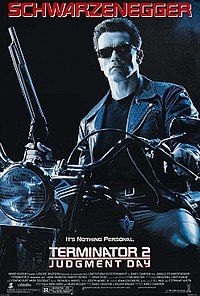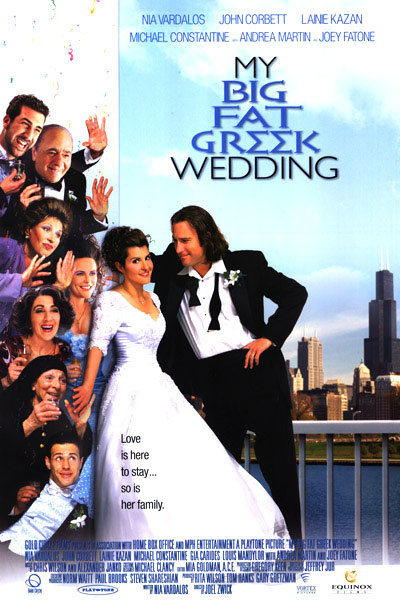.jpg) When Hollywood is bereft of ideas, one of the wells it lowers its bucket into is classic TV. Everything from “The Beverly Hillbillies” to “The Mod Squad” to “I Spy” to “Bewitched” have been given the big-budget, big-stars treatment. The results are usually dire. So it is with a sigh of relief that I can say the great 1960s spy spoof “Get Smart” will not be tossed into the same rubbish bin.
When Hollywood is bereft of ideas, one of the wells it lowers its bucket into is classic TV. Everything from “The Beverly Hillbillies” to “The Mod Squad” to “I Spy” to “Bewitched” have been given the big-budget, big-stars treatment. The results are usually dire. So it is with a sigh of relief that I can say the great 1960s spy spoof “Get Smart” will not be tossed into the same rubbish bin.“Get Smart” then and now centers on the misadventures of Maxwell Smart, an inept field agent for the spy agency CONTROL who does battle with Russian adversaries at KAOS. Then Maxwell was played with deadpan perfection by Don Adams. Now, in a masterstroke of casting, he is played Steve Carell who is so good at deadpan deliver on NBC’s “The Office” that sometimes it is hard to see the line between serious and funny.
Maxwell’s partner who is usually left with the chore of getting him out of jams is Agent 99 (Anne Hathaway, “The Devil Wears Prada”). Hathaway may seem like an odd replacement for Barbara Feldon, but she proves an excellent choice. Previously, I hadn’t been won over by Hathaway, who always seemed pretty and perky, but little more. Here she showcases fine comedic timing. It could be that the Carell’s comic energy upped Hathaway’s game.
Carell and Hathaway earn their biggest laughs together in a dance sequence that brings their rivalry to a head. The duo projects a genuine chemistry that falls flat only when the script by Tom J. Astle and Matt Ember tries to force more serious or romantic moments. These moments are small and don’t drag film’s pacing to a halt.
This isn’t just Carell and Hathaway’s show, though. The whole cast is pitch-perfect. This is definitely a case of a cast making good material — at least at times — reach excellence. Alan Arkin (“Little Miss Sunshine”) as The Chief steals the movie in the final act and earns the film’s single biggest laugh with his reaction to a car accident.
Terence Stamp (“The Limey”) as the head of KAOS exudes menace with a knowing wink. Arkin and Stamp are such old pros that their mere presence elevates everything around them to another level.
Dwayne “The Rock” Johnson continues to show a knack for comedy as Agent 23, and Masi Oka (“Heroes”) earns laughs as one of CONTROL's gadget inventors. There are also funny cameos by Bill Murray and James Caan.
“Get Smart” doesn’t feel like a shameless cash in. There seems to be a real affection for the series from everyone involved, which is refreshing since most film adaptations of TV shows are in name only.
The few adaptations that have worked balanced paying tribute to the source material while finding their own voice. This held true for the first “Charlie’s Angels” film, “Starsky and Hutch” and “The Brady Bunch Movie,” all of which took a self-parody tone that was perhaps the only way to approach the kitsch factor associated with those series.
But “Get Smart” was already a parody of James Bond and Cold War politics, so a self-parody would’ve fallen painfully flat. Thankfully, this update finds the right tone of nostalgia for the original, while creating something new that will have appeal to those who wouldn’t know Maxwell Smart from Maxwell Edison.
The “Get Smart” film is more action-oriented than its television counterpart, but, although there are explosions and car chases, these set pieces are played for laughs not thrills. There is a great sequence with Agent 99 having to save Maxwell from a parachute-less free fall, and another involving Maxwell dangling from a plane.
Although there are catch phrases and in-jokes for fans of the show, this is a stand-alone piece. It has its own style, but doesn’t negate the spirit of it predecessor. You get the impression that show creators Mel Brooks and Buck Henry, who were consultant on the film, would’ve tried similar gags if they had the budget that director Peter Segal was afforded.
On a side note, film buffs will appreciate a nice homage to the classic War Room scenes from “Dr. Strangelove.” It is a nice above-and-beyond touch.
 The newly minted Marvel Studio is on a roll. After years of selling the rights to their titles to other production companies, Marvel comics made the bold move to produce its own films, and thus far the company is no joke. Following on the heels of their wildly entertaining “Iron Man,” Marvel delivers another surprisingly good film in “The Incredible Hulk.”
The newly minted Marvel Studio is on a roll. After years of selling the rights to their titles to other production companies, Marvel comics made the bold move to produce its own films, and thus far the company is no joke. Following on the heels of their wildly entertaining “Iron Man,” Marvel delivers another surprisingly good film in “The Incredible Hulk.” “The Visitor” may sound like the title for the latest big-budget alien-invasion film or psychological thriller, but it is neither of those things. Instead it is a powerful human drama that, in its own small way, is an important film.
“The Visitor” may sound like the title for the latest big-budget alien-invasion film or psychological thriller, but it is neither of those things. Instead it is a powerful human drama that, in its own small way, is an important film. It can never be said that musician Ben Hammond isn’t loyal to where he grew up. No matter what adventures his life takes him on, the 2001 Fryeburg Academy graduate from Hiram, Maine always comes home to share his new life experiences.
It can never be said that musician Ben Hammond isn’t loyal to where he grew up. No matter what adventures his life takes him on, the 2001 Fryeburg Academy graduate from Hiram, Maine always comes home to share his new life experiences.  “We decided to put it up front almost like the way an emcee would introduce a show,” said Hammond. “[Kweku] is introducing a lot of the lyrical themes that happen on the album. I think it worked out really well in that way, and I think it gives a different texture.”
“We decided to put it up front almost like the way an emcee would introduce a show,” said Hammond. “[Kweku] is introducing a lot of the lyrical themes that happen on the album. I think it worked out really well in that way, and I think it gives a different texture.” Hammond is hoping to run through the whole album at the Stone Mountain show following a solo acoustic set of older material. He also promises a few unexpected musical surprises.
Hammond is hoping to run through the whole album at the Stone Mountain show following a solo acoustic set of older material. He also promises a few unexpected musical surprises. "Jaws" (1975)
"Jaws" (1975) "Star Wars" (1977)
"Star Wars" (1977) "Animal House" (1978)
"Animal House" (1978) "Ghostbusters" (1984)
"Ghostbusters" (1984) "Batman" (1989)
"Batman" (1989) "Terminator 2: Judgment Day" (1991)
"Terminator 2: Judgment Day" (1991) "Sixth Sense" (1999)
"Sixth Sense" (1999) "Shrek" (2001)
"Shrek" (2001) "My Big Fat Greek Wedding" (2002)
"My Big Fat Greek Wedding" (2002) "Pirates of Caribbean: The Curse of the Black Pearl" (2003)
"Pirates of Caribbean: The Curse of the Black Pearl" (2003)